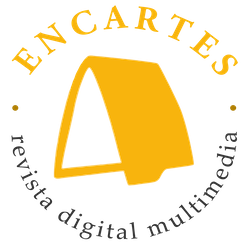Technologies, transnational migration, mass tourism, trade and mediatized communication have generated intense social flows that we call global. From them derives the circulation of cultural goods that, in addition to deterritorializing and reterritorializing traditions, generate exchanges that engender novel hybridizations. Some of them are the result of mixtures of elements from societies that were previously distant and alien. There are different hybrid cultural products represented in "in-between-medium", ambivalent identity aesthetics. Homi Bhabha recognizes as hybrid that (object or subject) which arises from the exchange between two traditions and which generates something different (which is no longer one or the other). Hybrid products are, then, those that arise from the fusion of two or more aesthetic traditions and that make explicit the presence of both referents as allusive components.
Through socio-digital networks, Encartes invited academics, students, visual artists, filmmakers, collectives and photographers to participate in a photographic contest with images that capture objects, subjects, places, landscapes, rituals recreated by the aesthetics of hybridization. We were interested in receiving images showing features that generate hard, unusual, antagonistic, paradoxical or ambivalent mixtures. Hybrid products show the creativity to create alternative identities such as, for example, body marks of youth cultures, recreations of products generated by diasporic strategies of relocalization, emblems of ambivalent national, religious or ethnic identities; cult objects that transgress religious or spiritual traditions; fusion in food, costumes, regional dance choreographies, architecture, crafts, redesign of transgender bodies, and so on.
We received dozens of photographs and an evaluation committee selected the ones that complied and adhered, both in quality and affinity, with the theme of the call on hybrid identities.
By reading the winning photographs as if they were parts of a text, we can recognize that hybridity is transversal. It is present both in traditional contexts, such as religious festivals, in which the selfie accompanies the representation of a Roman centurion during a Staging of the Stations of the Crossas in ancient archaeological sites that today are the site of ceremonies of invented ancestralities (as is the case of Stonehenge), or in different places and urban territories. Hybridity articulates spaces, memories, traditions, representations and actors.
The dances of conquest are currently stagings of memory in which the history of evangelization is kept alive, but they also function as anchors of new representations. This conjugation generates realities, fictionalities and fictions turned reality. A chinelo embodies the traditional Old Man of the dance acting as a being of terror in the Halloween style, without having to give up being guadalupano. The masks are a characteristic element of the baroque tradition, but in the present they not only simulate cultural resistance under the appearance of the assimilation of European faces, but they also place, in the same mask, the symbolization of opposing faces that fight in the Guerrero dance: the chinelo (representation of the white and bearded European conquistador) with the tecuani (the daredevil jaguar). In contrast, tattooing has conquered a new support for the baroque iconic act: the body. In the photograph entitled "When you're not around, I paint!" the body of a woman, presumably Mexican, can be seen, with an enchanted garden tattooed on her body and, between the space of her blouse and skirt, the face of a Thai-style deity can be seen.
Hybridity is first and foremost a glocal phenomenon, energized by global technologies, markets and migratory dynamics, but embodied in bodies rooted in local traditions. Technology through cell phone cameras appears to co-create the images of cultural hybridity by assembling different temporalities that take place in the same performance. The cameras also deterritorialize and resituate practices. In the image taken during the feast of Epiphany in the city of La Paz, Bolivia, shows that the same scene is captured and projected simultaneously by different cameras, whose projection in socio-digital networks deterritorializes the ritual act. Cell phones are also gadgets of catrinas and the deceased that superimpose planes of existence that parody between fantasy and the cultural heritage the Day of the Dead.
Another hybridizing vector present in the photographs is that of migration. In an image recreates St. Nicholas of Bari practicing the yoga posture bhujangasana, printed on the wall of a street in Bari. This photo captures the syncretism between the devotional aesthetics of the Catholic saints and the asanas of Buddhist yoga practice. Immigration is also a generator of surprising hybridizations such as the following the Ganesha-Guadalupewhich inscribes the mother of Mexicans as a deity in a Hindu temple in the border city of Tijuana.
Diaspora is also taken into account in the cultural goods that circulate in the electronic mass media. These are the new producers of imaginaries that are embodied or placed in other landscapes, generating exchanges between fiction and reality. Here we show a traditional cylinder maker in the streets of Mexico City masquerading as an abominable Grinch who hates Christmas, but at the same time disguises himself as Santa Claus, the patron saint of commodified Christmas. On a wall in BoliviaThe graffiti places the fantastic Spiderman -a famous American comic book hero- cleaning the shoes of Chapulín Colorado -a Mexican humor antihero produced by one of Mexico's most famous television networks, Televisa, through Canal de las Estrellas. The creativity in this graffiti generates an image that can be read under the keys of the Latin American imaginary and the discourse of decolonization. For this reason, this photo was chosen for the cover of the magazine. The cultural industries also promote shows and massive sporting events. The soccer World Cup is experienced as national recognition and encourages people to take the public square and to wearing the colors of the uniform with a sculpture of the DavidThe building is a prototype of classical art and Greek beauty, in a place as remote as the city of Montevideo.
Hybridization also generates moral transgressions that operate in the blurring between the private and the public, the religious and the profane. This hybrid landscape is achieved through the photographic exercise of placing sexual diversity in the light of day, of setting up an altar in a popular lingerie store in a traditional city such as San Luis Potosi, where the visual creator of the image saysIt's not fiction, it's not reality. It is a combination: we create realities, accepting what surrounds us".
In sum, the photographs show us that hybridity goes hand in hand with decontextualization and its new creative assemblages capable of transforming meanings. The best example of this can be appreciated in the photo of the burqas put into operation by a collective of feminist women to cover their faces in a March 8th demonstration; in this new political assembly, the burkas, far from signifying female submission, manifest a dissident political expression.
Renée de la Torre Castellanos and Arturo Gutiérrez del Ángel
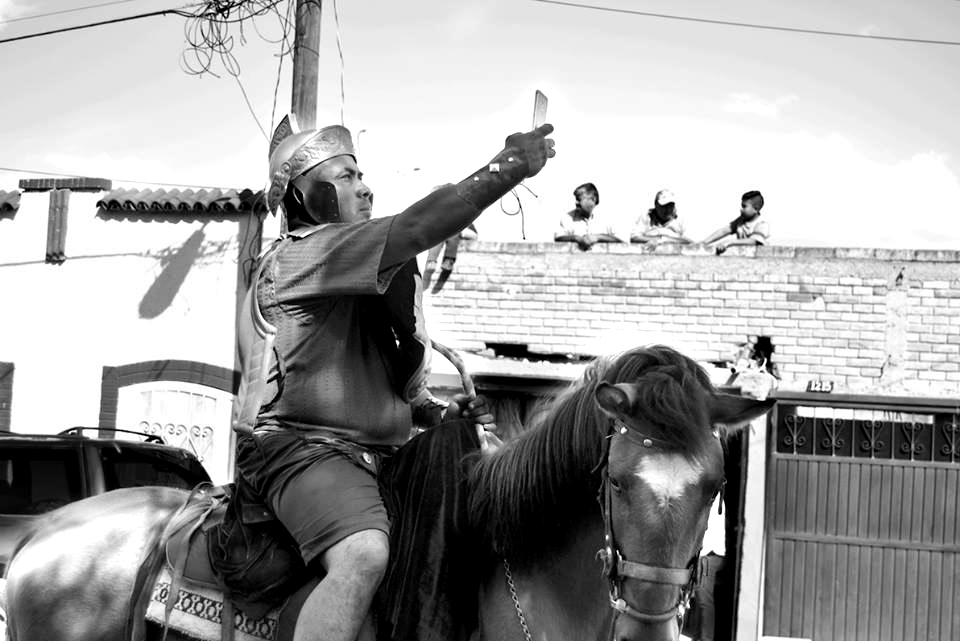
Centurion
Alejandro Pérez Cervantes. Saltillo, Coahuila, March 2018.
Participating character in the annual representation of the traditional Viacrucis in the Ojo de Agua neighborhood, in the southern periphery of the city of Saltillo, Coahuila, where there are evident syncretisms, crossroads and unusual intersections between tradition and modernity.
Shamanic drifts in the druid temple
Yael Dansac, Stonehenge, United Kingdom, June 21, 2017.
The celebration of the summer solstice at Stonehenge is a multitudinous event that brings together unexpected religious mixes and serves as a showcase for hybrid identities.

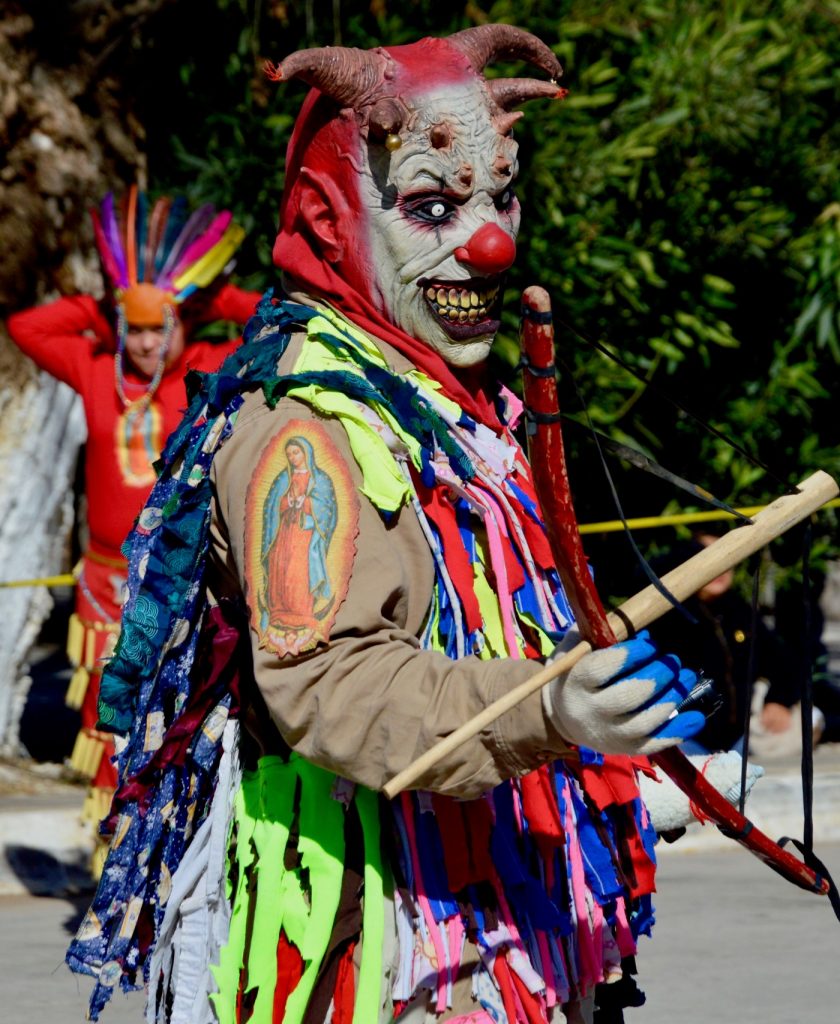
The Old Man of the Matachines Dance
Marco Vinicio Morales Muñoz, Ciudad Aldama, Chihuahua, 2018.
The character of the Old Man in the matachines dance in the feast of the Virgin of Guadalupe in Ciudad Aldama, Chihuahua, symbol and representation of evil in popular catholic religiosity.
Mask fusion of the chinelo-tecuani
Sendic Sagal, Tenextepango, municipality of Ayala, Morelos, July 23, 2022.
Aesthetic-festive synthesis of the identity fusion between the symbols of the Chinelo and the Tecuani; dialogue and revitalization between the two main popular traditions in Zapatista lands.
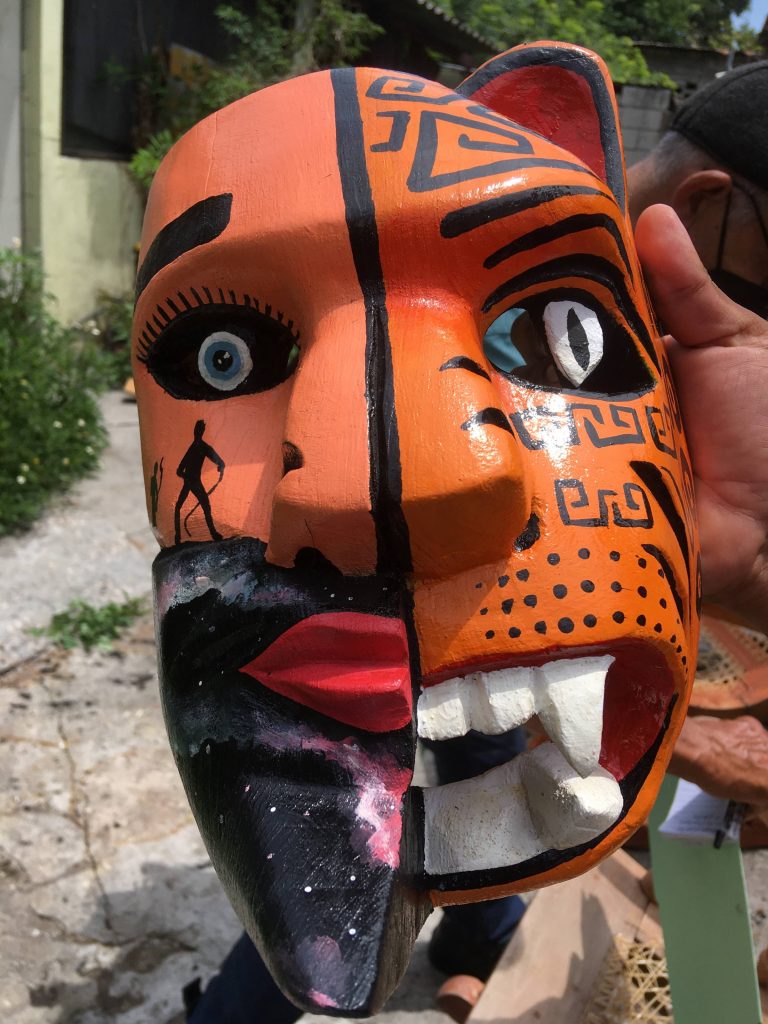
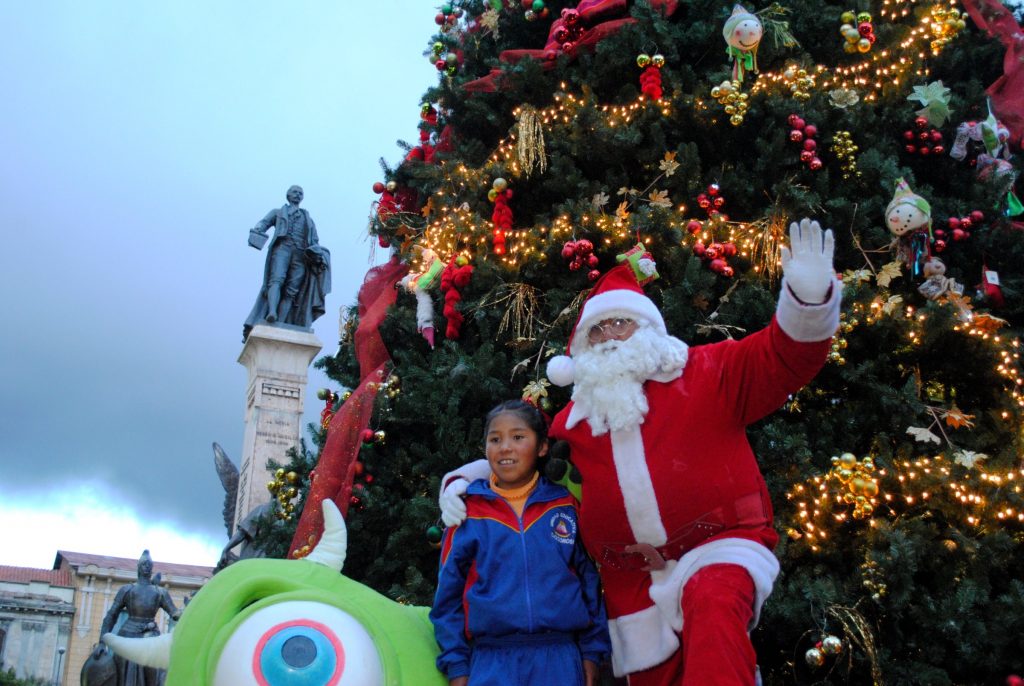
Smile
María Belén Aenlle, Feast of the Epiphany in La Paz - Bolivia.
It was taken at the Epiphany Feast in La Paz - Bolivia. Times, cultures, different traditions and two cameras (the girl's family's and mine) converge in the same space and in a smile.
Mortuary postmodernities
Yllich Escamilla, Coyoacan, Mexico City, 02 Nov 2021
The omnipresence of cellular devices generates a passivity of public space performances, which show an ambivalence between Halloween and Day of the Dead.
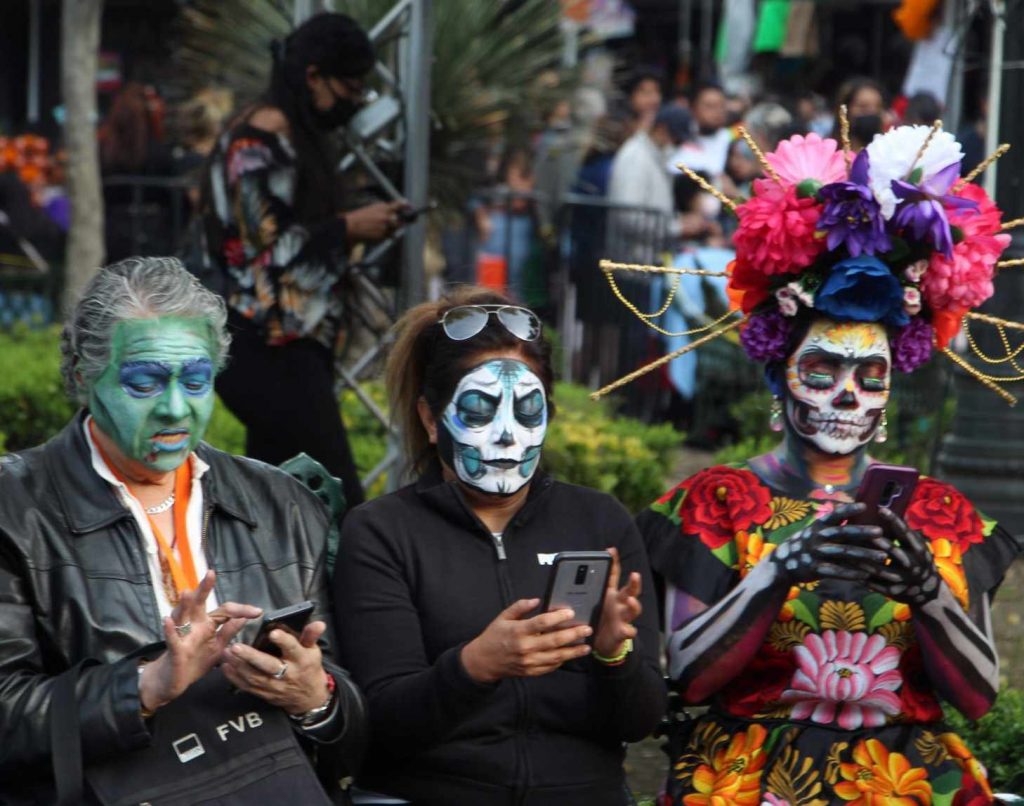

St. Nicholas of Bari practicing yoga posture bhujangasana
Yael Dansac, Bari, Italy, September 4, 2020.
In the streets of Bari, allusions to the patron saint are omnipresent. Migratory flows and Psalm 103:12 inspired this mural where the Bishop of Myra unites East and West.
Gaṇeśa and Guadalupe. A Mexican goddess in the Hindu universe.
Lucero López, Coyoacán, Mexico City, 02 Nov 2021
Ceremony in honor of the god Gaṇeśa in a Hindu temple, performed by migrants of Indian descent residing in Tijuana. The inclusion of the Virgin of Guadalupe symbolizes, among others, their new life in Mexico.
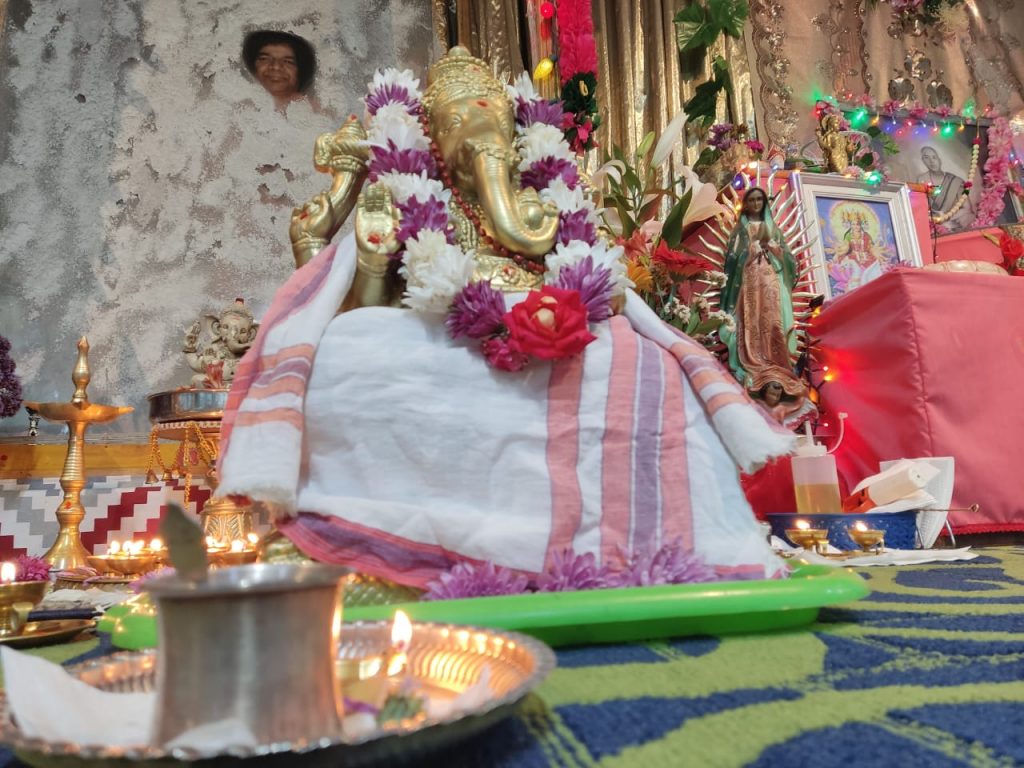

The Grinch of the Historic Center
Yllich Escamilla Santiago, Historic Center, December 24, 2021.
His name is Juan, he is the pillar that supports his family, he is an organ grinder and resists the inclemencies of life and weather, even the pandemic that hit us three years ago, depending on the season, Juan Organillero is characterized to make his job more striking and earn a few coins.
Two superheroes
Hugo José Suárez, La Paz (Bolivia), 2021
On a wall in La Paz, two opposing heroes are depicted: Chapulín Colorado and Spiderman, Mexico and the United States face each other. But the American superhero shines the Mexican's shoes. The image is intervened by third parties: one paints the Chapulín's nose with red, and another one draws an X with aerosol. From the streets, the roles of international cultural products are reinvented...


Michelangelo's David swelling for Uruguayan Celeste
Carlo Américo Caballero Cárdenas, Montevideo, Uruguay, June 25, 2018.
At the Montevideo City Hall, people flock to the public screening of the 2018 Uruguay-Russia World Cup match, gathered around the life-size replica of the David (made in 1931, there since 1958), which is dressed for the occasion with the national shirt and shorts. The Charrúa soccer identity and the Europeanist architectural-statuary typology of the capital are fused: in such a way that an urban landmark of 18 de Julio Avenue, which emulates the canon of Italian Renaissance aesthetics, is popularized and becomes one more fan among the passion, the clamor, flags and the colors of the oriental team.
Transvestism at the tianguis
Martín Ortiz, Tianguis de las vías, San Luis Potosí, March 2023.
In a city as traditional and religious as San Luis Potosi, the simple act of showing in the light of day the games we privately play with gender and pointing a camera at them, tells the story of a rupture in everyday life. Something deserves to be seen, but what is it?
The neoprovince mixes tradition with novelty. Hostile contexts with characters that exalt them. It is not fiction, it is not reality. It is a combination: we create realities, accepting what surrounds us.
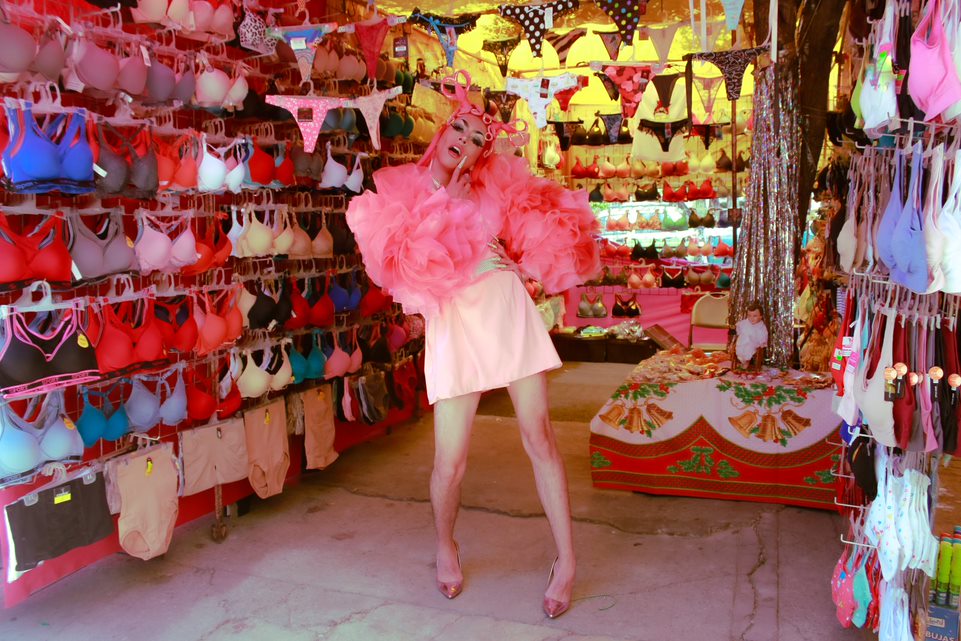

Black Block, Memory and Pandemic
Yllich Escamilla Santiago, Eje Central Tunnel, at the height of Garibaldi, Historic Center, October 2, 2021.
March to commemorate the October 2 massacre. Still in pandemic, the resistors took to the streets, despite the contagion peaks. Supporters of the Black Bloc marched along Eje Central up to Tacuba Street, where they were blocked.
When you are not around, I paint!
Saúl Recinas, Mexico City, July 13, 2023.
The photograph is part of a postdoctoral project on body aesthetics, otherness and stigma configuration, which aims to understand to what extent body aesthetics, mainly related to tattooing, contribute to the crystallization of stigmas and social segregation.
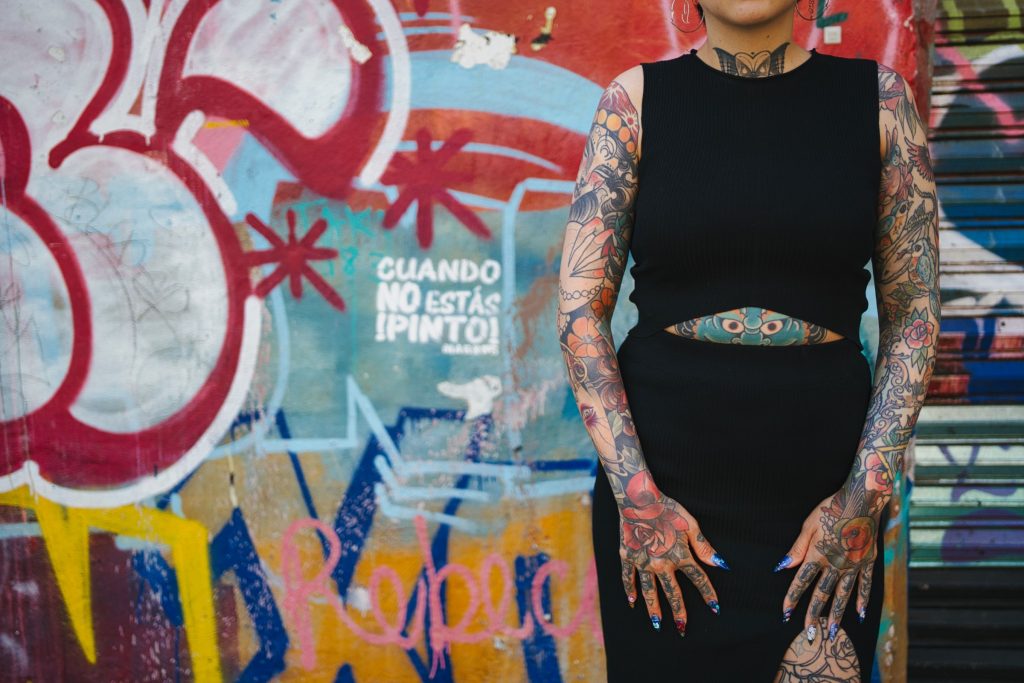

Replica of the image of Santa Muerte in the Noria de San Pantaleón, Sombrerete, Zacatecas
Frida Sánchez, La Noria de San Pantaleón, Sombrerete, October 2017.
This figure is a replica of the image of Death in the town of Noria de San Pantaleón, in the municipality of Sombrerete, Zacatecas. The original image was carved around 1940, however, it was burned because candles were left burning on the altar.
